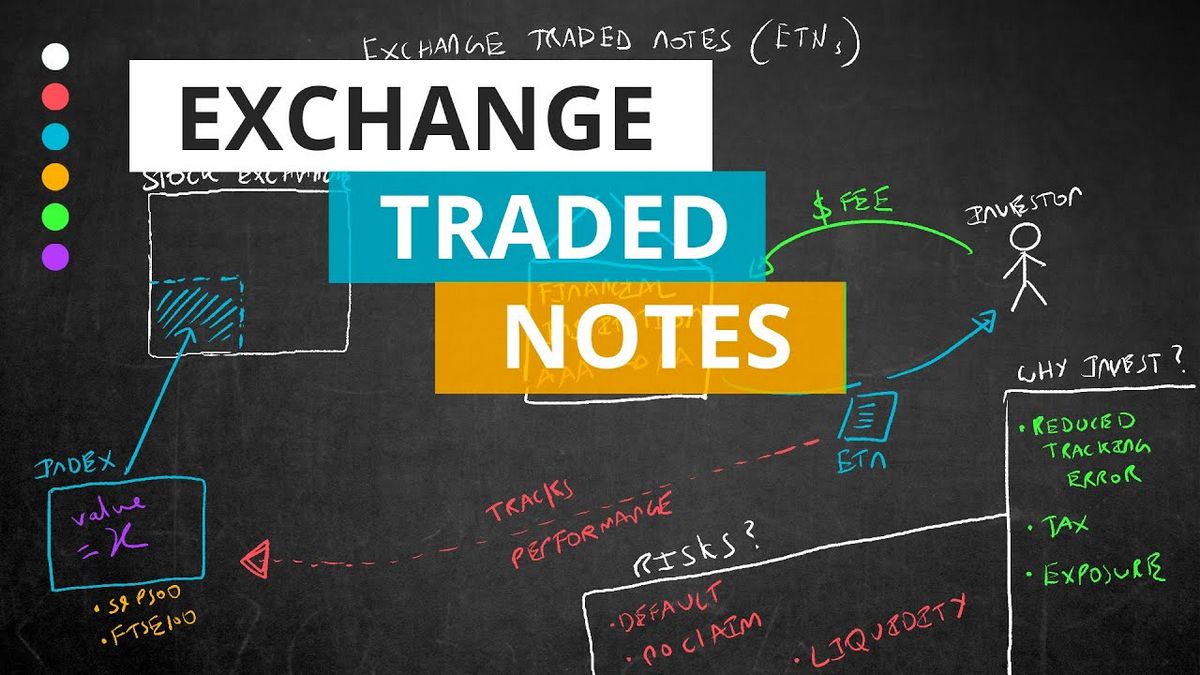What Are Exchange-Traded Notes ETNs and How Do They Work

Exchange-Traded Notes (ETNs) are unsecured debt securities that track an underlying index of securities and trade on a major exchange. They are similar to bonds but do not have interest payments. Instead, their prices fluctuate like stocks.
Key Takeaways:
1. ETNs are unsecured debt securities that track an underlying index of securities.
2. Unlike bonds, ETNs do not pay periodic interest payments.
3. Investors can buy and sell ETNs on major exchanges, like stocks, and profit from the difference minus any fees.
ETNs are typically issued by financial institutions and their return is based on a market index. At maturity, the ETN pays the return of the index it tracks, but it does not pay any interest payments like a bond.
When an ETN matures, the financial institution deducts fees and gives the investor cash based on the performance of the underlying index. Since ETNs trade on major exchanges, investors can buy and sell them, profiting from the difference between the purchase and sale prices minus any fees.
ETNs differ from exchange-traded funds (ETFs), which own the securities in the index they track. ETNs, on the other hand, do not provide ownership of the securities but rather pay the return generated by the index. Therefore, investors must trust that the issuer will fulfill the return based on the underlying index.
ETNs were first issued by Barclays Bank PLC in 2006 at $50 per share. The market price depends on the performance of the underlying index.
Risk from an ETN issuer includes the possibility of receiving a lower amount at maturity if the index does not perform well enough to cover fees. The issuer’s financial viability also affects the ETN’s ability to repay the principal and gains from the index. Additionally, political, economic, legal, or regulatory changes may impact the issuer’s ability to pay on time.
ETNs might use options to achieve the index’s return, which increases the risk of losses for investors. Closure risk exists if the issuer closes the ETN before maturity, potentially resulting in a loss for the investor.
Tracking errors can occur if there are credit issues with the issuer, causing the ETN’s price to deviate from the underlying index.
Liquidity risks include significant price jumps if a financial institution stops issuing new ETNs, or price drops if additional ETNs are suddenly issued. Trading activity for ETNs can fluctuate dramatically, leading to higher or lower prices than the actual value of the index.
For tax purposes, the difference between the purchase and selling price of an ETN is typically treated as a capital gain or loss. Investors should consult a tax professional for specific tax ramifications.
A real-world example of an ETN is the JPMorgan Alerian MLP Index ETN (AMJ), which tracks energy infrastructure companies that are master limited partnerships (MLPs). Investors should be aware of the risks associated with ETNs, including credit risk and the potential for a significant decline in share price.
Overall, investors should carefully consider the risks involved when investing in ETNs.


